This section covers the different techniques of distributing light in an interior space achieved with different types of luminaire (lighting fixture).
Lighting Techniques |
|
|
Diffuse uplighting:
Intent: To achieve uniform ambient lighting in a space. Light is reflected off the ceiling to introduce it indirectly into the space.
Quality: Beam spreads from 80° to 120° upwards. Even illumination in the space.
Use: To design a low contrast space with uniform ceiling luminance. Also used in spaces where glare should be avoided [1]. |
|
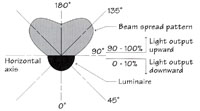
Figure L-LD1: Diffuse Uplighting [2]
|
Concentrated uplighting:
Intent: Create areas of high luminance on the ceiling with dark areas in between.
Quality: Beam spreads from 30° or lower upwards.
Use: To design a high contrast space with visually prominent ceiling [3]. |
|
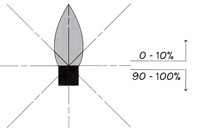
Figure L-LD2: Concentrated Uplighting [4]
|
Diffuse downlighting:
Intent: To achieve uniform ambient lighting in a space. To illuminate the horizontal surface below the luminaire [5].
Quality: Beam spreads from 80° to 120° downwards.
Use: To design a low contrast space [6]. |
|
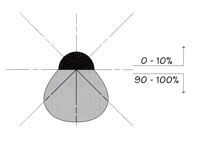
Figure L-LD3:Diffuse Downlighting [7]
|
Concentrated downlighting:
Intent: Create areas of high luminance on the floor with dark areas in between.
Quality: Beam spreads from 30° or lower downwards.
Use: To design a high contrast space. |
|
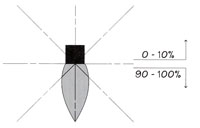
Figure L-LD4: Concentrated Downlighting [8]
|
Multidirectional lighting:
Intent: To create a stimulating, high brightness interior.
Quality: Light emitted in several directions [9].
Use: Reduced shadow and contrast. A high brightness interior [10]. |
|
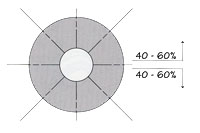
Figure L-LD5: Multidirectional lighting [11]
|
Semi-direct lighting:
Intent: Light emitted in only upward and downward direction. 60% to 90% of light is downwards [12].
Quality: Moderate contrast in the space.
Use: To balance uplight and downlight, creating a space of moderate contrast. |
|
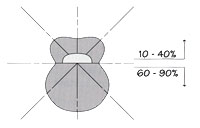
Figure L-LD6: Semi-direct lighting [13]
|
Semi-indirect lighting:
Intent: Light emitted in only upward and downward direction. 60% to 90% of light is upwards [14].
Quality: Moderate contrast in the space.
Use: To balance uplight and downlight, creating a space of moderate contrast. Used in a space requiring less direct light and glare. |
|

Figure L-LD7: Semi-indirect lighting [15]
|
Wall Washing:
Intent: To achieve even illumination on a vertical surface, side to side and top to bottom. The luminaire is placed at one-quarter of the distance away from the surface. Spacing between luminaires varies from one-quarter to one-half of the wall height depending on the luminaire [16].
Quality: Even illumination on a vertical surface.
Use: To highlight a vertical surface, hiding the surface imperfections, and flattening the texture [17]. |
|
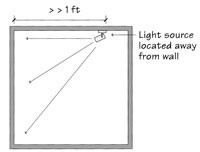
Figure L-LD8: Wall Washing [18]
|
Wall Grazing:
Intent: To reveal the texture of a surface. The luminaire is placed intentionally close to the surface.
Quality: Even wall lighting highlighting its texture.
Use: Used to illuminate surfaces with interesting textures such as stone, brick, etc. [19] |
|
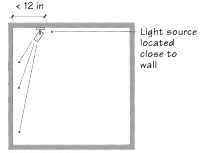
Figure L-LD9: Wall Grazing [20]
|
Slot Lighting:
Intent: To light a wall accentuating the junction of the wall and the ceiling, indirectly lighting the space [21].
Quality: Brighter illumination at the top of the wall; indirect illumination in the rest of the space.
Use: To accentuate the ceiling plane. |
|
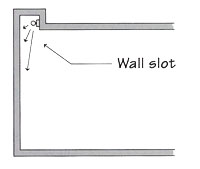
Figure L-LD10: Slot lighting [22]
|
Accent lighting:
Intent: To illuminate an object to focus attention on it. The luminaire is ideally located so that it produces light about 30° from vertical, which is generally agreed best for art [23].
Quality: Even distribution of light on the object
Use: To accentuate an object in space. |
|
|
Cove lighting:
Intent: To directly illuminate the ceiling, and indirectly illuminate a space, accentuating the ceiling plane [24].
Quality: Brighter ceiling close to the light source.
Use: To accentuate the ceiling plane. |
|
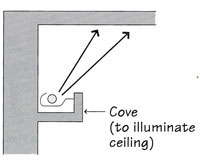
Figure L-LD11: Cove lighting [25]
|

















